Have you been in a car accident yet remain uncertain about who’s responsible for the collision?
Figuring out who caused complex car accidents is one of the most difficult steps in the post-accident process. The purpose of identifying fault goes beyond blame because proving who is responsible enables you to secure deserved compensation.
Fault determination affects both your insurance rates and your chances of recovering damages. Lack of proper evidence and documentation may result in you bearing financial responsibility for someone else’s error.
This article explains the precise process of determining fault in complex accident cases that create confusion for everyone involved.
What You’ll Discover Inside:
- How Insurance Companies Determine Fault
- Types of Evidence That Make or Break Your Case
- When Multiple Parties Share the Blame
How Insurance Companies Determine Fault
Insurance adjusters perform detailed investigations when assessing accidents rather than relying solely on your account of events. Insurance companies utilize particular techniques to determine responsibility for accidents.
Police Reports: The Foundation of Fault Determination
Most fault investigations rely heavily on police reports as their foundation. At accident scenes officers take essential notes that later assist in determining the sequence of events.
- Driver statements from everyone involved
- Eye-witness testimonies from individuals who observed the crash
- Investigators assess physical markers such as skid marks alongside the damage to vehicles and scattered debris.
- The enforcement authorities charged drivers with traffic citations when they violated traffic regulations.
- Officer observations about road and weather conditions
Many people overlook the fact that although police reports hold substantial influence they do not represent the ultimate determination. Insurance companies frequently conduct individual investigations which may lead to conclusions that differ from other findings.
State Laws That Impact Fault Decisions
There are two systems which states use to determine fault.
- At-Fault States (Most Common): Within these states the driver who initiated the accident bears full responsibility for paying the damages. The insurance company for the liable driver must cover all injury and property damage expenses up to the maximum amount allowed by the policy.
- No-Fault States: Drivers in states such as Florida, Michigan, and New York are covered for their injuries by their own insurance policies no matter who caused the accident. Property damage claims continue to operate under fault-based rules.
Certain states implement comparative or contributory negligence rules that allow for the division of fault between drivers. These legal systems dictate that your settlement amount could decrease based on your assigned fault percentage.
Insurance Adjuster Tactics to Watch For
Insurance adjusters represent the insurance company’s interests rather than yours. Insurance adjusters work to lower both the company’s legal responsibility and the amount it must pay out. Common tactics include:
- The insurance adjuster tries to push you into giving recorded statements before you have completely understood the event.
- Insurance adjusters will ask for complete medical records to identify any pre-existing health conditions.
- Insurance adjusters often propose immediate lowball settlement offers before you fully understand the extent of your damages.
- Misrepresenting statements you’ve made about the accident
- The company seeks to prolong investigative processes so you will become frustrated and settle for a reduced compensation.
A knowledgeable car accident attorney provides protection against these tactics while making sure your case receives fair presentation.
Types of Evidence That Make or Break Your Case
Proper evidence submission can determine if your claim will succeed or be rejected. Here’s what you need to gather:
Physical Evidence From the Accident Scene
Physical evidence remains truthful and reveals the actual events of the incident.
- The measurement and pattern of skid marks indicate vehicles’ speed before impact and whether drivers attempted braking.
- Damage locations and severity levels help identify collision points and the directions of applied forces.
- Collision dynamics become clear through the analysis of locations where broken glass and car parts settled on the ground.
- The accident may have resulted from potholes or missing signage along with faulty traffic signals.
- Weather records provide official documentation of environmental conditions like rain and fog which influence visibility and traction.
It is essential to photograph all accident-related elements immediately because these pieces of evidence tend to vanish soon after.
Digital Evidence in Modern Accidents
Technology has unlocked evidence resources that were unavailable until recent years.
- Dashcam technology enables more drivers today to record accidents as they occur.
- Surveillance cameras located at many intersections may have captured footage of your vehicle accident.
- GPS data from smartphones demonstrates driving speed and tracks mobile phone usage during accidents.
- Modern vehicles capture crucial data such as speed and braking actions before an accident occurs.
- Online posts sometimes reveal at-fault drivers who accidentally admit their responsibility.
The role of digital evidence becomes essential when proving distraction as a contributing element.
Witness Testimony: More Important Than You Think
Complex accident cases depend heavily on the testimony of unbiased third-party witnesses.
- They provide unbiased accounts of what happened
- Witness statements serve to either validate or challenge what drivers say happened
- Accident cases become stronger when multiple witnesses provide verifying accounts.
- Accident reconstruction specialists serve as expert witnesses who deliver professional analyses.
It is essential to obtain witness contact information right at the accident site. After people leave an accident scene they become very hard to track down.
When Multiple Parties Share the Blame
Accidents sometimes involve shared blame instead of just one liable party. Many complex scenarios involve shared responsibility.
Understanding Comparative vs. Contributory Negligence
Each state implements unique regulations for managing situations where multiple parties share fault.
- Pure Comparative Negligence: A person who holds 99% fault in an incident can recover damages under pure comparative negligence but must accept a deduction equal to their fault percentage. California and New York follow this system.
- Modified Comparative Negligence: Damage recovery rights depend on your fault percentage being below 50% or 51% based on your state’s specific rules. Your ability to recover damages decreases according to the percentage you share in the fault. Most states use this system.
- Contributory Negligence: Any contribution to the accident from your side completely bars you from recovering damages. Only a few states maintain this strict rule with Virginia, Alabama, and Maryland among them.
Multi-Vehicle Pileups: Sorting Out the Chaos
Determining fault becomes exceptionally challenging with chain-reaction accidents.
- An individual analysis is necessary for every collision that occurred throughout the sequence.
- The first driver who caused the accident may be held liable for all subsequent collisions.
- Middle cars could share fault if they were not maintaining a safe following distance
- Expert accident reconstruction is often necessary
The complexity of the situation escalates significantly when more vehicles become involved in the accident. According to recent statistics from the NHTSA, motor vehicle crash fatalities decreased to 40,990 in 2023 representing a 3.6% drop from the 2022 total of 42,514. Road safety improved as fatalities fell because proper fault determination helped counteract the rise in vehicle miles traveled.
The Bottom Line on Proving Fault
Understanding fault in complicated accident situations requires attention to these essential guidelines.
- Record all details at the scene before physical evidence vanishes.
- Even for minor injuries you should seek medical attention immediately
- Be cautious when speaking with insurance adjusters
- Serious accidents require the guidance of an attorney.
- React swiftly because evidence disappears quickly as deadlines approach.
By combining the proper approach with solid evidence you can effectively prove fault throughout the difficult process encountered in even complex accident cases. The level of effort you dedicate to building your case determines your chances of receiving just compensation for your injuries and damages.
Learning about how fault determination functions arms you with the necessary power to defend your rights at crucial moments. The intricate nature of the process should not stop you from pursuing the justice and compensation you deserve.

